#Romanian forest
Text

Capitala României este București.
The capital of Romania is Bucharest.
#romania#europe#bucharest#romanian#language#bran castle#dracula#dracula castle#forest#nature#trees#jungle
135 notes
·
View notes
Text
Romanian witches: Muma Padurii
(Note: I unfortunately cannot add the accents needed for the writing of those names since my keyboard is not equiped. So know that there are accents missing)
I originally made a post about one Romanian fairytale figure... which turned into a post about two fairytale figures... which became a post about three fairytale figures... So ultimately I decided to split this post into a whole series because it was getting too big. I want to explore with you three characters tied together in Romanian folklore and all present within Romanian fairytales, but each fascinating in their own right. And I want to begin with the first of these ladies... Muma Padurii.
Muma Padurii means "The Forest Mom", or "The Mother of the Forest" (Muma is an archaic form of "mom").
In fairytales, Muma Padurii is an antagonist. She is an embodiment of the wicked witch, or rather of the hag. She is a very old and very ugly woman (so ugly the expression "You look like Muma padurii" is an insult) who lives all alone in a little, dark and scary house in the depths of the woods. She is not a normal woman: she is a witch gifted with various supernatural powers (including shapeshifting), and she is also an ogress who loves to eat children. It is as a children-predator that she usually appears within Romanian fairytales, luring kids to her house to kill and cook them. One of the most famous Muma Padurii fairytales is the Romanian version of "Hansel and Gretel", which mostly differs by A) having the witch named B) the house not being made of candy and C) the genders are reversed (here it is the girl that is to be boiled alive into a soup, while it is the boy that pushes the hag into the oven).
But the thing with Muma Padurii is that, in a similar way to Frau Holle, she is an entity that was "split" between fairytales and legends. There is a Muma Padurii of folktales which is the evil hag I presented above, but there is also a Muma Padurii of beliefs and legends which is quite different and much more neutral.
This Muma Padurii is still an old, ugly, shapeshifting witch - but she is presented as amoral rather than wicked, with a personality mixing a fairy-like mischieviousness and just pure insanity. The name "Muma Padurii" is also very revealing... In the fairytales this name is used in the typical motif of the witch/hag as the "false mother" or "anti-mother", but in the Romanian mythology, this name indicates what Muma Padurii is. She is the Mother of the Forest, as in the spirit of the forest. Her main role, and the reason for her hostility towards humankind, is her function as the guardian of the woods. She still lives in a remote and hidden location - but it is not always a little cabin, it can just be a tree, and it is usually within a virgin-woodland at the heart of the forest, untouched by human hands. She still brews potions - but they are good potions, that she uses to heal injured animals and sick trees. For Muma Padurii always keeps the forest alive. She does attack humans - but only those that destroy the fauna and flora, or that trespass within forbidden areas where only wild things are supposed to be. This was why those that entered the woods were warned to not go too far and to respect what surrounded them: else Muma Padurii would at best scare them away, at worst drive them to insanity with her magic. As such, it was forbidden to pick up certain wild fruits and berries in the forest during certain times of the year - they were for the animals to replenish their strength, and Mama Padurii made sure this rule was followed. In the most extreme cases she would kill the trespassers and devour their corpses like a wild animal - a bogey-version of Muma Padurii that explains her role as a child-eating crone in fairytales...
Muma Padurii is present all across Romania, sometimes in local variations (Padureanca, Muma Huciului), and this explains why there are so many different incarnations of her. Sometimes she is an angry ghost of the woods, a vengeful spirit which can be heard crying among the trees for all the plants that mankind destroyed, and if a house built near the forest isn't carefully locked up at night, she will enter in them at midnight and kill all those inside... Other times she is depicted as a young and beautiful fairy of light, who will be kind and helpful to children but will trick adults into being lost, having their body paralyzed or dying in various ways. This specific idea of the "young faced Muma Padurii" is notably present in another folktale/fairytale, where it is said that the Muma Padurii is a witch that needs to eat human hearts to keep herself young and alive - as such she takes on the appearance of a beautiful woman to lure young men into the woods, but once they are isolated enough she turns into a giant monster and rips their hearts away.
Her link to the forest is highlighted by how she is often said to disguise herself as a tree, to be a part-tree woman, or a hag clothed in moss (she also can appear as a cow, a horse or an ox) ; her function as a "Romanian fairy" is also highlighted by how in various legends she either makes babies sick, or replaces them by changelings (and as such they were several folk-spells and rituals Romanian country-folks used to protect their babies from the Forest-Mom). But mostly Muma Padurii stays an embodiment of the woods in what they have of dangerous and scary. She can be kind and helpful - but only towards the "innocent", animals, plants and (sometimes) children. However she stays an ancient woman of the woods, the mistress of the wild animals, the embodiment of a state of non-civilizations, and as such she is the fright that drives one mad and the savage force that will kill and eat men. And even then, the fauna and flora itself is not always escaping her wrath - some records say that Mama Padurii knows the name of every tree of the forest, but that she can get angry at some and curse them to fall either by the woodsman's axe or by lightning.
The last interesting difference between the fairytale Muma and the legendary Muma is that, while the fairytale Muma is usually a lonely entity, in beliefs Muma Padurii was part of a large family. Sometimes Muma Padurii herself was multiplied into several "Muma" - there was notably a belief about many of them sometimes visiting the cabins of those that lived near the woods, asking to have their hair brushed and cleaned, with a comb and butter (which isn't an easy feat since she had her hair dirty, tangled in snake-like braids and so long it touches the floor). Anyone who agreed to the task and performed it well could receive a wish from the Mother of the Woods - but the rule was that they could only pronounce three words in total as long as she was here, if a fourth was pronounced, she would take your voice and leave you mute. Sometimes Muma Padurii was given a male counterpart of companion called "The Father of the Forests", or the "Woods Papa".
Muma Padurii was also said to have several sons, which were the spirits of the woods and/or of the night (going by names such as Decuseara, Zorila, Murgila, Mamornito or "Midnight"). She is also linked to a set of female forest spirits known as the Fata Padurii (Fata being of course linked to the "fairies", "fées", "fatum" - but here it is to be understood as "The Daughters of the Forest", "The Girls of the Woods, and fittingly they are said to be the daughters of Muma Padurii) ; and to an entity I personaly do not know much about, "Mosul Codruilui" (she is said to be her mother, and "Mosul" means "old woman")
Finally, there was a certain Christianization of the Muma (as some tales started saying her task as a guardian of the forest was given to her by God), and a modern attempt at explaining how she could be such an ambiguous entity, benevolent and malevolent at the same time: most modern storytellers highlight how protective she is of the fauna and flora, and how she was said to wail and cry for the destroyed wood, to explain her "transformation" as her becoming more and more bitter, and angrier and fuller of hate the more humans destroyed her domain, harmed her trees and wounded her "children". A true ecological fable.
Some people point out that Muma Padurii could be a "Romanian equivalent" of the Russian Baba-Yaga which is... not quite exact and not quite true. The two characters seem to derive from a same old "forest mother-goddess" but there are too many differences between Muma Padurii and Baba-Yaga for them to be consideed one and the same. There is however a interesting link between the two, which will be the subject of my next post... about Baba Cloantza.
#romanian folkore#romanian fairytales#romanian witches#romanian mythology#romania#muma padurii#forest goddess#hag#witches of folklore#legendary witches#forest-woman#wild woman#fairytale antagonist#forest mother
20 notes
·
View notes
Photo

𝔄 յՏ𝔱𝔥 ℭ𝔢𝔫𝔱𝔲𝔯𝔶-𝔒𝔩𝔡 ℌ𝔬𝔲𝔰𝔢 ℭ𝔞𝔯𝔳𝔢𝔡 𝔉𝔯𝔬𝔪 𝔖𝔱𝔬𝔫𝔢 𝔅𝔶 𝔄 ℜ𝔬𝔪𝔞𝔫𝔦𝔞𝔫 𝔐𝔬𝔫𝔨
📷 𝔐𝔦𝔥𝔞𝔦 𝔗𝔯𝔬𝔞𝔫𝔞
328 notes
·
View notes
Photo

Forest Flowers - Ștefan Câlția
Romanian, b. 1942-
Oil on canvas
241 notes
·
View notes
Text
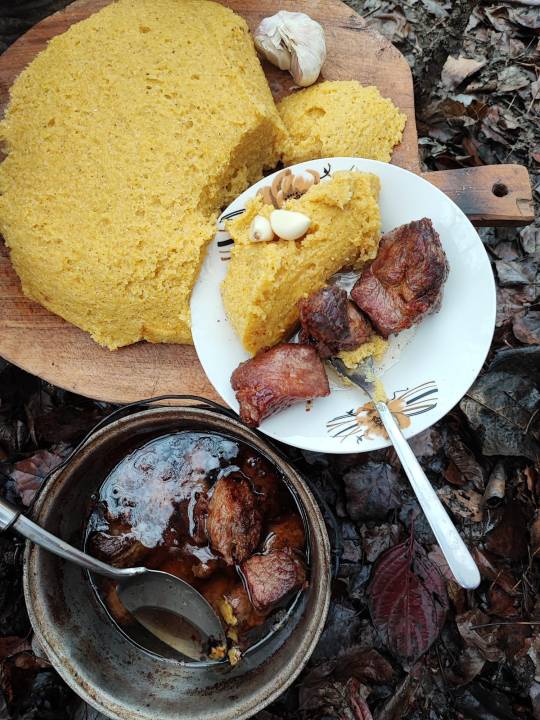
#sunlight#nature#landscapes#autumn#under 1k#food#forest food#forest cooking#nature food#cooking#cooking outdoors#outdoors aesthetic#outdoors#outdoors activity#romania#romanian dish#garlic#polenta#foodie
33 notes
·
View notes
Text
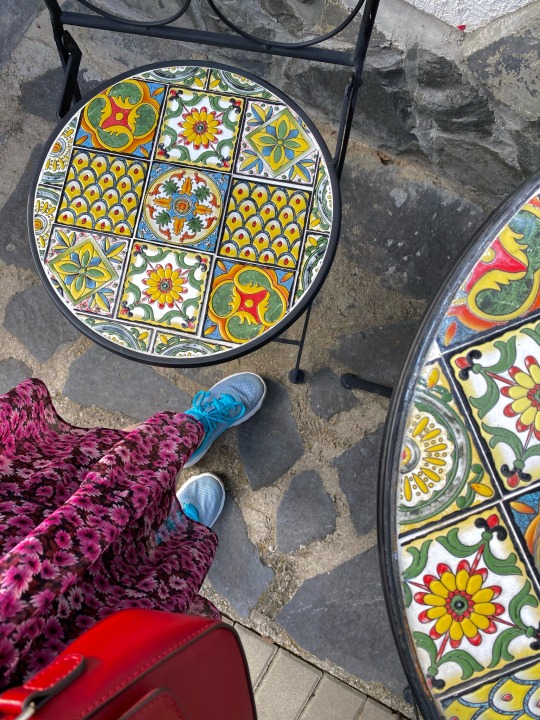



instagram: @alteralunis
#summer#nature#artists on tumblr#female artists#mountains#forest#greenery#girlblogging#this is a girlblog#romania#romanian#party night
5 notes
·
View notes
Text
🍁🍂



10 notes
·
View notes
Text
Goddamn it Netflix, Ikea founder was a Nazi???!!!!!!
Uggghhhh guess I have to design and build all my own furniture going forward 😭
#fast furniture#i mean yes#there are a lot of other issues#like their discussion of romanian forests#akk *destruction#and in general#but i love me some meatballs#and their beautiful assembly plans
4 notes
·
View notes
Text
youtube
TIARRA - IELELE
Se mișcă pădurea cu foșnetul aiurea,
Aprinde luna, ascultă furtuna
Și vântul în zbor prin părul lor,
Noaptea tăcută pașii le frământă.
.
Sunt ielele, ielele, nebunele,
Ielele, ielele, nebunele.
.
Și trupurile lor pe pământul gol
În iureșul jocului, la lumina focului,
Se mișcă pădurea cu foșnetul aiurea,
Aprinde luna, ascultă furtuna.
.
Ca prin vis te cheamă la ele,
Nu te uita în ochii lor,
În mintea ta te îndeamnă la uitare,
Nu te lăsa cuprins de visare.
.
Pașii lor în noapte se-aud printre șoapte,
Umbrele lor se coboară ușor,
Se pierd în zare, rămân doar lacrimi amare,
În urma lor te topești de dor.
....
The Ladies of the Forest
(Or; Wicked Fairies)
.
The forest moves
With a strange rustling
The Moon shines
The Storm listens
.
And the wind in the air
Through their hair
The silent night
Steps scare them
.
They are fairies,
Madness (that brings madness)
fairies,
crazy fairies
.
And their ways
On the empty place
In the middle of game
At the light of the fire
.
The forest moves
With a strange rustling
Moon shines
Storm listens
.
They are fairies
crazy fairies
fairies
crazy fairies....
......
FOLKLORE
The iele are feminine mythical creatures in Romanian mythology. There are several differing descriptions of their characteristics.
Often they are described as faeries (zâne in Romanian), with great seductive power over men, with magic skills and attributes similar to nymphs, naiads and dryads found in Greek mythology.
The iele are said to live in the sky, in forests, in caves, on isolated mountain cliffs and in marshes, and reported to have been seen bathing in the springs or at crossroads. From this point of view, the Iele are similar to the Ancient Greek Hecate, a three headed goddess of Thracian origin, who guards crossroads.
They mostly appear at night by moonlight, as dancing Horas, in secluded areas such as glades, the tops of certain trees (maples, walnut trees), ponds, river sides, crossroads or abandoned fireplaces, dancing naked, with their breasts almost covered by their disheveled hair, with bells on their ankles and carrying candles.
In almost all of these instances, the Iele appear to be incorporeal. Rarely, they are dressed in chain mail coats.
The effect of their specific dance, the Hora is similar to the dances of the Bacchantes.
The iele are said not to be solitary creatures, but gather in groups in the air, where they can fly with or without wings; they can travel with incredible speeds, either on their own, or with chariots of fire.
The iele appear sometimes with bodies, at other times only as immaterial spirits.
They are young and beautiful, voluptuous immortals, their frenzy causing delirium in onlookers, and with bad tempers, but not being necessarily evil.
They come in groups of three or seven.
#Youtube#iele#ielele#tiarra#song#lyrics#romanian#mythology#myth#legends#legend#ladies of the forest#dark
2 notes
·
View notes
Text
Un basm printre rânduri
— Spune-mi, tată Codru, pe unde am luat-o de în așa fel m-am rătăcit?
— Fată dragă, fie-ți inima deschisă, căci în ale mele păduri nimenea nu se pierde, șopti Codrul printre frunze.
Fata se încruntă și oftă adânc.
— Tată Codru, trebuie să ajung la al meu prinț înainte să se lase Soarele!
— Dară Soarele nu-i de temut, ridică Codrul o creangă confuz.
— Nu de Soare îmi e teamă, ci de fiarele ce-ți cutreieră venele, îi destăinui fata.
— Fata mea cu ochi căprui și inimă de foc, trebuie doar să-mi ceri ajutorul și eu ți-l voi oferi întru totul.
— Codrule, te implor, ține toate bestiile la depărtare și arată-mi drumul meu, spuse fata.
— Așa cum îți dorește sufletul, Inimă de Foc.
În fața fetei se deschise aievea o cărare luminată de valuri de licurici, iară codrul murmura un cânt străin.
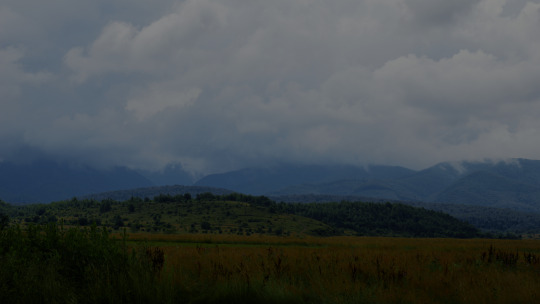
0 notes
Text

Nicolae Grigorescu
0 notes
Text
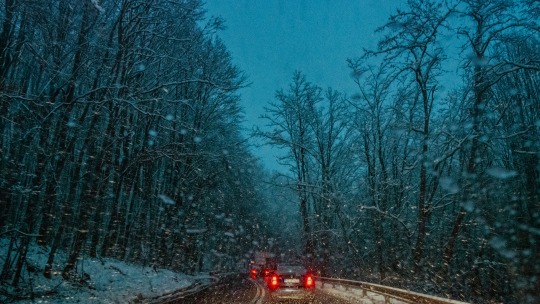
23.12.2023
Less than half of the way a terrible snowstorm started just as we crossed a narrow winding mountain road. The traffic slowed down to almost a stop. Nothing to do but drive on, try to stay calm and listen to "The Running Grave"
#357of365
0 notes
Text
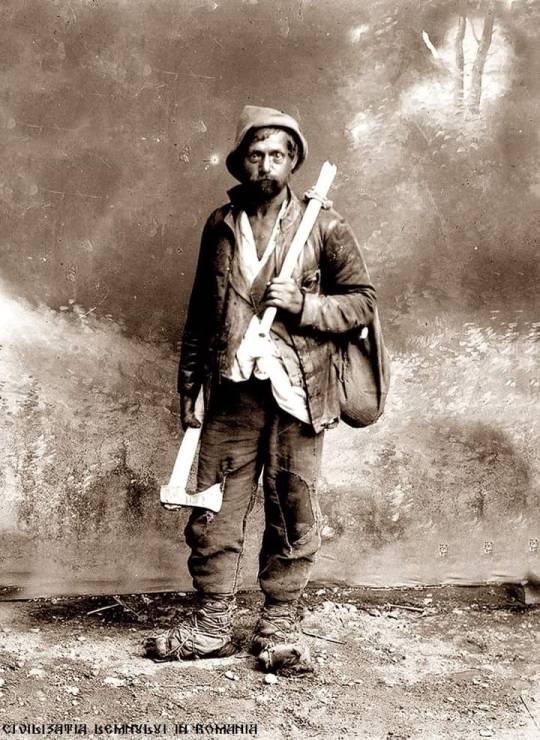
Forest worker in old Romania.
1 note
·
View note
Note
what’s ikea doing in romania?
Illegal deforestation of our ancient forests

(The author does incorrectly call Romania a Soviet state when we were only part of the Warsaw Pact instead)



The article talks about how those journalists and environmentalist were attacked by 15 armed thugs and the police response (of basically letting the attackers go) as well as Romanian forests make up the vast majority of old-growth forests left in Europe
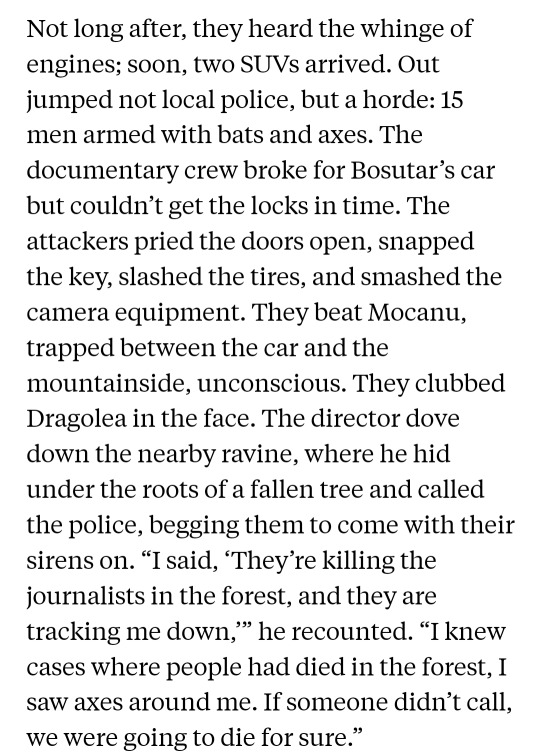
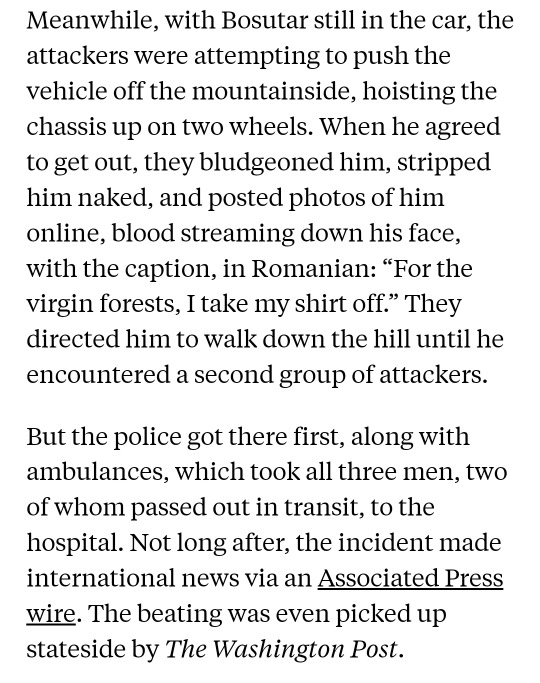

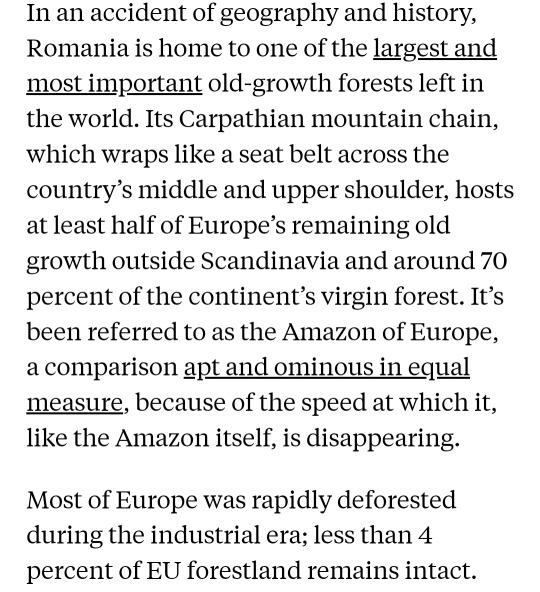
But Ikea is not the only one doing it
This article talks about Austrian companies doing the same illegal deforestation
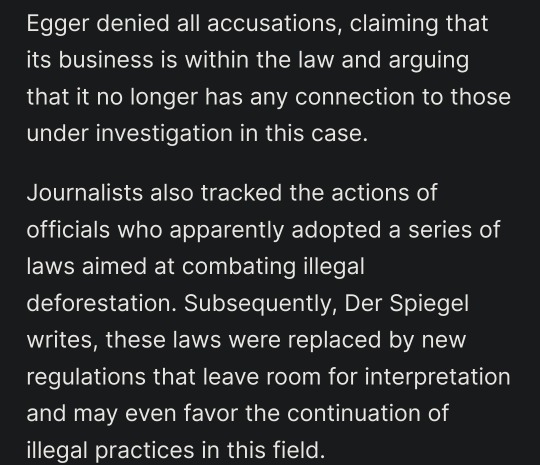

And it gives a better picture of how much forest is lost per year
#romania#ikea#imperialism#deforestation#pretty sure I had a couple extra articles but I couldn't find them#asks#anon
7K notes
·
View notes
Text
"Eighty-year-old Silvia Dan learnt her folk songs at her grandmother’s knee. Having spent her life caring for livestock on her smallholding in the Carpathian Mountains, she’s now starring on an album released in the UK.
Made by Romanian-born, Brighton-based artist Nico de Transilvania, the album – Interbeing – was recorded in the remote village of Nucsoara, where Dan is renowned for the pure beauty of her voice. A team of artists, videographers, photographers and musicians travelled to the village 180km north of Bucharest to record with Dan and local musicians on traditional Romanian flutes.
It is an area that is renowned for its old-growth forests which support lynx, wolves and bears, and is often described as the Amazon of Europe. Illegal logging has severely affected the region, so de Transilvania wanted to record the album as a way to use music to restore some of the damage. Every copy of the album sold will go towards planting native trees that are properly protected in law, in a project personally overseen by de Transilvania via her nonprofit Forests without Frontiers. So far the organisation has planted 150,000 trees over the last three years.
For Dan, whose grandmother wrote all her own folk songs, it feels right that they are now helping to restore the forests that inspired her.
“The album means a lot to me, it makes me proud that future generations will hear my ancestor’s songs – music and nature are embedded in our blood,” she said. “I am so happy that money raised will help to restore the landscape near my village – it has been devastating to see the destruction, and this project gives me hope.”"
-via Positive News, 2/20/23
#romania#slavic#eastern europe#traditional music#romanian culture#folk music#folk songs#cultural preservation#deforestation#conservation#music#good news#hope
1K notes
·
View notes
Text




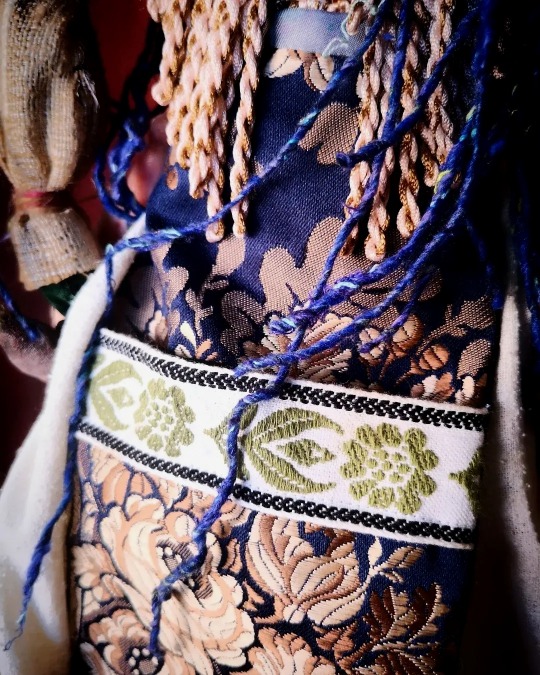

Muma Pădurii is a grotesque mischievous hag from Romanian folklore. Dwelling deep in the forest she cares for the native flora and fauna, scaring away those who threaten to harm her wild habitat.
Handmade artdoll by XPHAIEA
#folklore#xphaiea#handmade#textileartist#muma padurii#romanian#romanian folklore#hag#witchcraft#esoteric#occult#supernatural#goblincore#goblin
346 notes
·
View notes